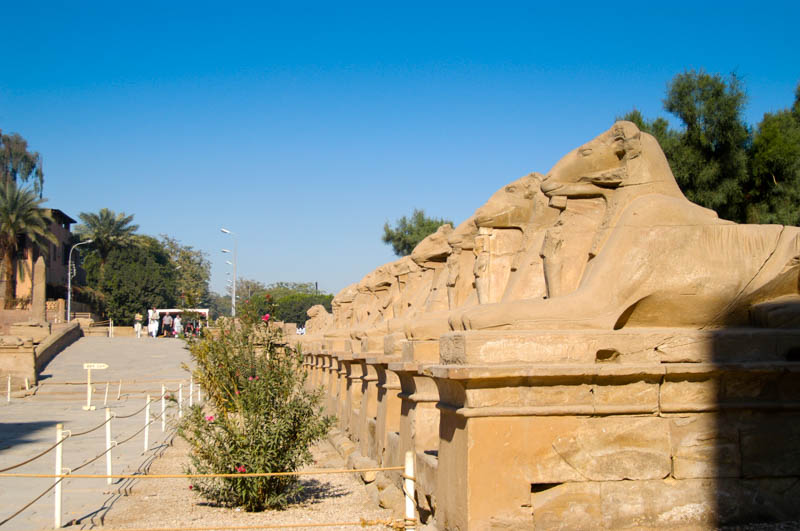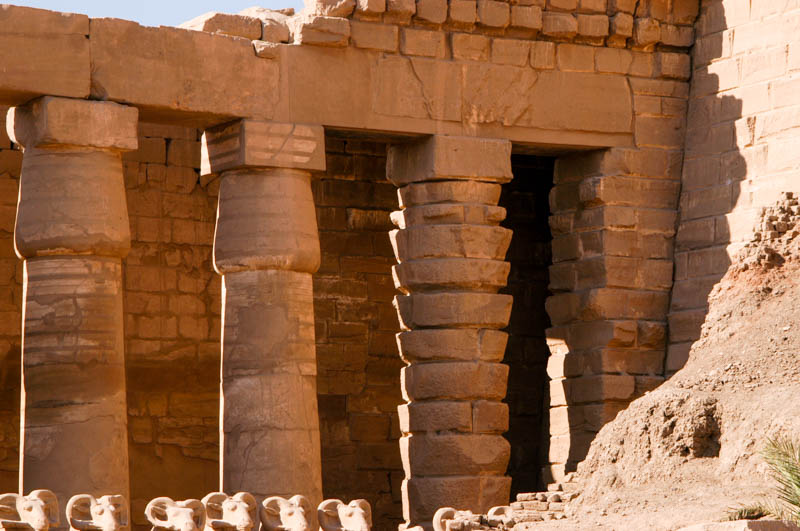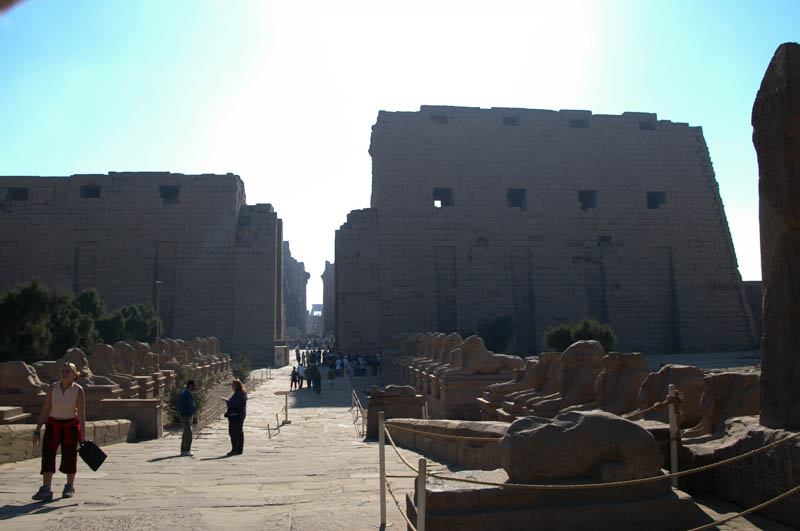
The succession of pylons, courts, hypostyle halls, and inner sanctuaries are almost overwhelming. THe temple of Amun is the core of the Temple of Karnak and it was updated, enlarged, and decorated by pharaohs for over 1300 years.
Like the temple at Luxor, Karnak was mostly buried by sand and silt for a millennia — which had the effect of preserving some of the art and statuary in the temple complex until it was cleared in the mid-19th century. When it was cleared, the rising water table of the city left the courtyard a swamp, littered with fallen stones and collapsed walls.

Some of the restoration has been hasty, at best — in at least one place, the stones of a column appear to have been put together upside down!
The main entrance of the temple is through the enclosure wall and a wide walkway lined with ram-headed sphinxes. THe avenue of sphinxes once ran from Karnak to the temple processional at Luxor to the south.

The first pylon is enormous, standing 43m high and funnelling visitors into the receding set of pylons and towers to the sanctuary. They are built of sandstone, although a crumbling mudbrick wall behind the stone may provide a glimpse of how the stone structures were built. This pylon was probably added in the 30th Dynasty by Nectanebo (who also added the enclosure wall). THe northern tower is not finished and neither of them are decorated.